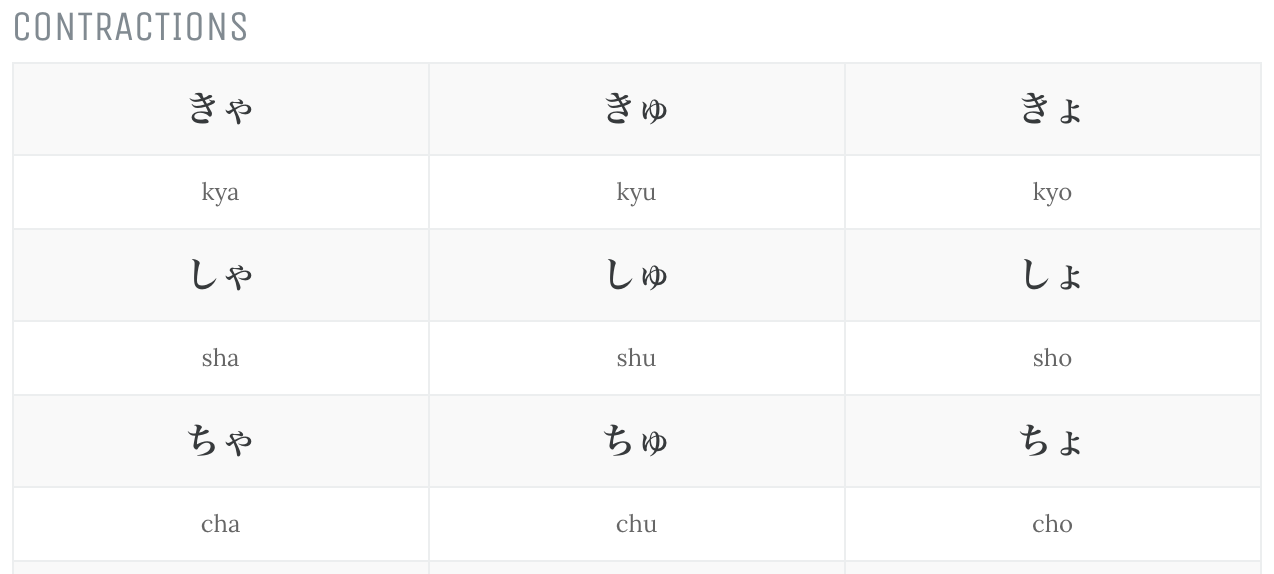Small vs Big Characters
Small characters are exactly what they sound like—smaller versions of certain kana characters. Here are some examples:
や ゃ (ya)
ゆ ゅ (yu)
よ ょ (yo)
You’ll see these small characters on WaniKani in combination kana. Combination kana are one large kana plus one small kana, which combine to make a new sound. You can find a complete list of them with audio here!
じゆう (all normal-sized characters) is pronounced ji-yuu.
じゅう (ゅ is a small character) is pronounced juu, because it’s a contraction.
This is a super important difference not only because of pronunciation, but because of the meanings as well. じゆう means “freedom” and じゅう means “ten.”
Typing small characters is easier than you might think. We have another guide just for typing all of the different characters in Japanese, which you should check out. This includes small kana. Here’s a preview:

This isn’t just us either, all standard Japanese IMEs use this method of typing contractions, so getting the hang of it now will help you later.
If you just need a quick refresher, here are some of examples of how to type contractions and how not to:
にゆう = niyuu
にゅう = nyuu
じよう = jiyou
じょう = jou [or] jyou
きゆう = kiyuu
きゅう = kyuu
りよく = riyoku
りょく = ryoku
じゆう = jiyuu
じゅう = juu [or] jyuu
じよ = jiyo
じょ = jo [or] jyo
If you’re having a really hard time remembering how to type the combination you want, you can also add an x before the character to make it smaller:
にゅう = nixyuu
じょう = jixyou
But that leads to slower typing, and you don’t want to be slow, you’re trying to learn 2000+ kanji over here!
Typing in Japanese — Series
This series will answer all of your burning typing questions.